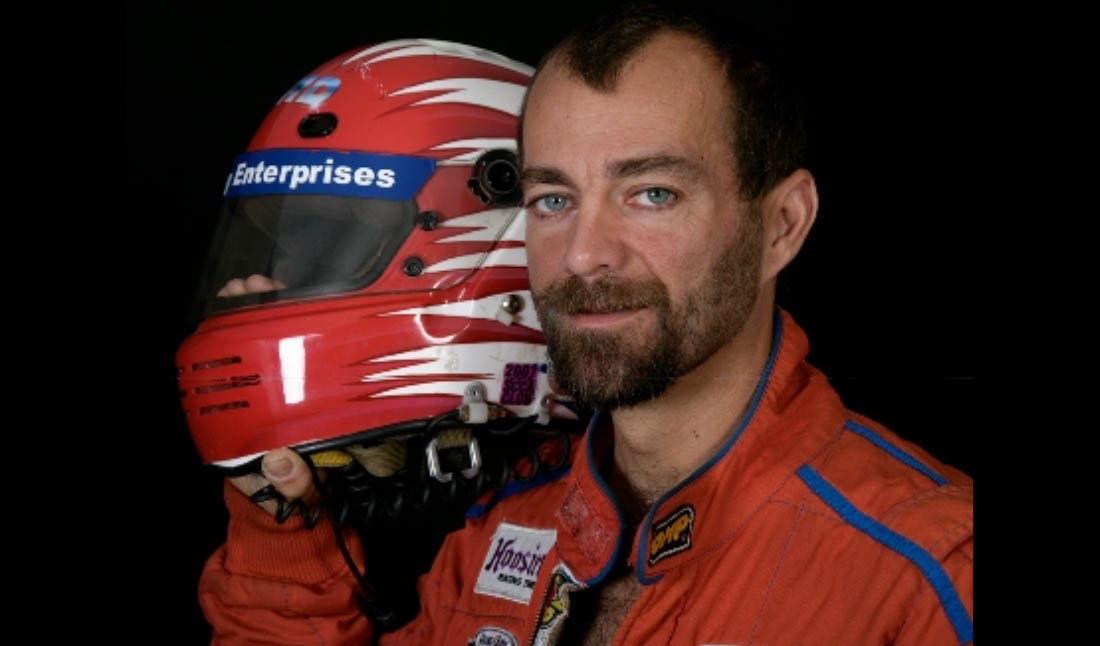Evan Darling became the first professional racecar driver to come out while still actively racing. He made his career in the Grand-Am Road Racing circuit/IMSA, along with stints in other racing divisions.
After coming out, Darling experienced a whirlwind of life changes which ultimately led him to retire. However, as the world continues to change, and as diversity and inclusion in sports become more and more tangible, Darling is ready to get back into the world of racing. Passport caught up with the dynamic race car driver to discuss his life and career.
How did this all begin? From my understanding, you started by racing bicycles?
Yeah, when I was a kid, I would race BMX bikes. I always loved competitions; it’s always been a very positive aspect of my life. And as a teenager, I started racing dirt bikes.
And how did dirt bikes turn into racing cars?
Oh, there was quite a big transition in-between! As a kid, I did some go-kart racing, which I’ve always loved. I even do it a bit to this day. And this really instilled a love of machines in me. I always loved working on engines and stuff, and go-karts were kind of my introduction into the world of automobiles and working on mechanics. I got to a point where I’d take everything apart and try to put them back together, even lawnmowers!
So, I guess the real question is, how did we go from lawnmowers to cars?
Ha! Well, unfortunately, I was outed to my parents when I was 18. They absolutely did not accept it. I was kicked out and had to move in with someone I was dating. We wound up in Yonkers, New York, and I attended Parsons for a while. I was waiting tables, trying to live the New York life, but this was during the peak of the AIDS crisis, and it was just horrible. Everyone around us was dying. There were also a lot of problems between me and my boyfriend. We were both young, and the gay world was just in such turmoil. It was disturbing to say the least. Finally, after about a year, I moved down to Florida with my friend. I needed to get away.
How did you get introduced to racing once you were in Florida?
Well, right when I got to Florida, I discovered this thing called autocross, which is just amateur stuff in parking lots. They put up cones and you just race around them. It’s pretty much the most entry-level thing you can do. Later on, I started working at car dealerships. So, while it wasn’t racing, it was a good way to allow me to be around cars every day.After doing that for a while, I opened a landscaping business, which gave me a lot of flexibility with my hours. This is what really allowed me to get into club racing, where I was entered into some of the biggest amateur-level races there are.
How did you make the jump from amateur to pro?
It was in 2007. I was able to take part in a race at Homestead – Miami Speedway, with the Grand-Am racing circuit, now known as IMSA (International Motor Sports Association). It was televised, we won money, we got to race brand new cars…it was a phenomenal experience. I even had The Miami Herald write an article about me, which was awesome.
I decided to come out right before the race. I wanted to be able to make an impact, and I figured I may as well come out before I got big, because I didn’t want it hanging around my neck like a burden.

Evan Darling in The Miami Herald
What happened after you came out?
Well, before coming out, I had some pretty big sponsors who thought they were on board. I won’t give names, because that’s unprofessional, but, yeah, there was some money there. Unfortunately, after coming out, it all changed. Nobody answered my calls after that. The agent I was hoping to get in with even stopped answering my calls. The publicists didn’t know what to do. It was all pretty rough. Fortunately, I was able to get interviews with The Advocate to tell my story, and I was even included in the Out 100 List for 2007.
What happened after that?
I had a few more pro races scheduled before I came out, one was at the Laguna Seca, where we came in 12th place out of over 40 cars, which is really good. The third race was with a different racing team at Lime Rock. Sadly, my co-driver completely totaled our car during practice. So we had to leave the race, which was devastating. I went back to the team I raced with at Laguna Seca, only to discover that the team’s manager was really homophobic. He ended up giving away my seat to someone else and only wanted to use me for my ability as a mechanic. I went back to the team with the totaled car, and we got to work rebuilding a new one. We managed to get a few more races in, but as 2008 approached, and the recession began, the finances just weren’t working out. For a long time, that was kind of the end of it.

What is you post-racing life like?
I still work on race cars. I’m a coach and still work with the mechanics. I just love racing, so it’s been important for me to stay in the industry.
So you want to stay in the world of racing?
Yeah, in fact, now that the sports industry has really started coming around, I’d love to get back into racing. I’m proud of everything I’ve done in my career. My goal is to race professionally in an endurance series. I’d love to create an all-gay team or a mixed-gender team. I think racing is still a little stagnated, so I’d love to come back and change that!


